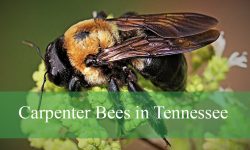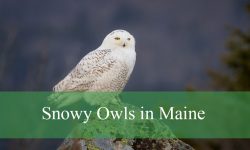Whenever I’m out exploring Idaho’s diverse landscapes during spring and summer, one of my favorite sights is watching hummingbirds darting gracefully between flowers. Their vibrant colors and lightning-fast wingbeats never fail to captivate me. Over the years, I’ve learned to recognize several species that make Idaho their temporary home, each with unique traits and fascinating behaviors.
In this guide, I want to share what I’ve discovered about the hummingbirds you can spot across Idaho—from the fiery Rufous to the tiny Calliope and even some rare visitors. Whether you’re a seasoned birdwatcher or just curious like me, knowing where and when to find these tiny jewels can make your outdoor adventures even more rewarding.
Common Hummingbirds Found in Idaho
Rufous Hummingbird (Selasphorus rufus)
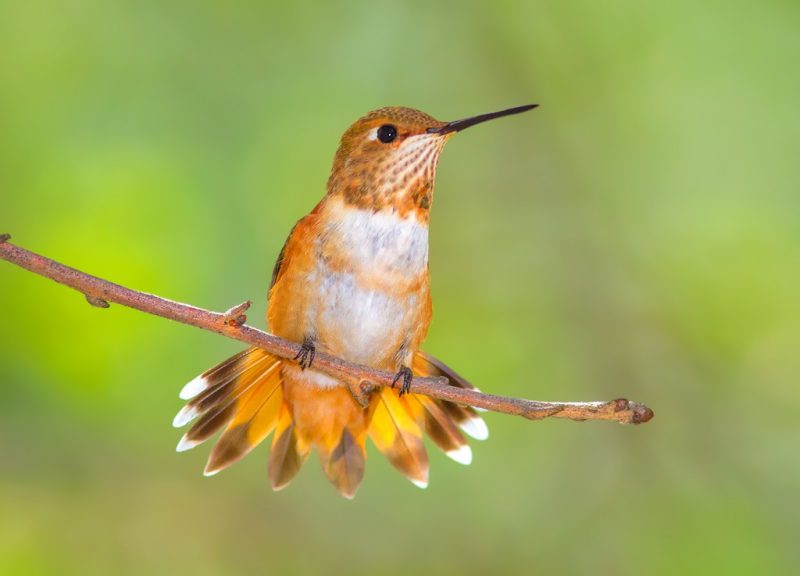
The Rufous Hummingbird is one of the most familiar hummingbirds in Idaho, known for its striking orange-reddish plumage. Males showcase a brilliant, fiery orange back and sides, with a shimmering reddish-orange throat called a gorget that catches sunlight spectacularly. Females and juveniles have a more muted appearance, featuring green backs and white underparts, often speckled with some orange spots. This species is highly territorial and bold, frequently defending feeding areas aggressively against other hummingbirds.
In terms of size, Rufous Hummingbirds measure approximately 3 to 3.5 inches (7.5 to 9 cm) in length, with a wingspan near 4 inches (10 cm). Their compact bodies and short, slightly curved bills are well adapted for feeding on nectar from a wide variety of flowers. The males’ rufous coloring is especially useful for identification, making this species easy to spot during Idaho’s spring and summer seasons.
Behaviorally, Rufous Hummingbirds are famous for their feisty nature and energetic flight. They are highly territorial, often chasing away intruders to protect their feeding territories. These hummingbirds are excellent migrants, traveling thousands of miles from wintering grounds in Mexico to breeding habitats in Idaho and the Pacific Northwest. They feed primarily on nectar but supplement their diet with small insects and spiders for protein.
In Idaho, Rufous Hummingbirds favor open woodlands, forest edges, mountain meadows, and backyard gardens rich with flowering plants. They are commonly seen in the state from late spring through early fall, making them the quintessential hummingbird experience for birdwatchers. Their adaptability to different environments allows them to thrive even in areas undergoing moderate human development.
Calliope Hummingbird (Selasphorus calliope)
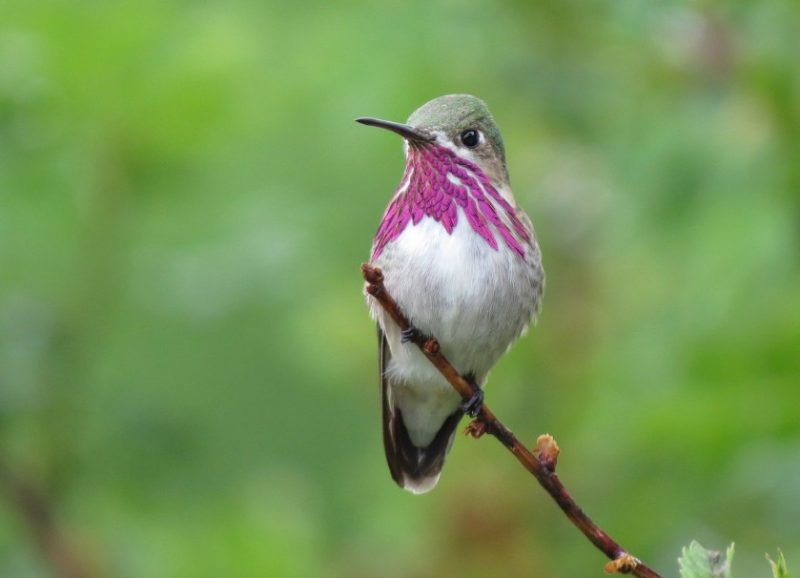
The Calliope Hummingbird is the smallest native bird in the United States and one of the most enchanting species found in Idaho. Males are distinguished by a dazzling magenta throat patch that fans out like a starburst, contrasted by a mostly green back and white underparts. Females lack the vibrant throat coloring but share the greenish upperparts and pale belly, often with some faint streaks. Their small size and vivid coloration make them a delight to spot during their brief Idaho visits.
Measuring just 2.75 to 3.25 inches (7 to 8.5 cm) in length, Calliope Hummingbirds have tiny, delicate bodies and relatively short bills suited to accessing nectar from small flowers. Their lightweight build supports agile and rapid flight maneuvers, allowing them to dart through mountain shrublands and forest edges with ease. They are among the most acrobatic of hummingbirds.
Behaviorally, Calliope Hummingbirds are known for their energetic and agile flight. They defend small territories around rich nectar sources, often performing elaborate aerial displays during courtship. Their migration from wintering grounds in Mexico to breeding areas in Idaho and the northern Rocky Mountains is remarkable given their diminutive size. In addition to nectar, they consume small insects to fulfill their protein needs.
In Idaho, Calliope Hummingbirds prefer higher elevation habitats such as mountainous forests, shrubby meadows, and riparian zones. They are typically found during the warm months of late spring and summer, taking advantage of blooming wildflowers and feeders. Their presence adds a splash of vibrant color to Idaho’s alpine and subalpine ecosystems.
Black-chinned Hummingbird (Archilochus alexandri)
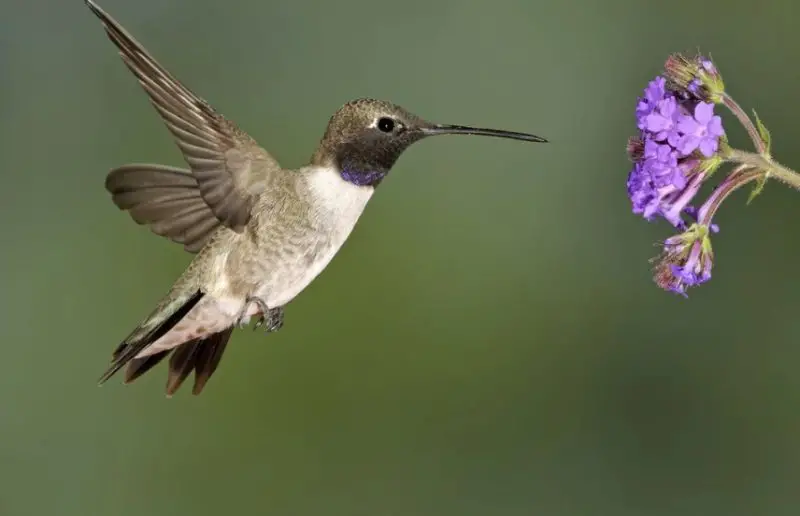
The Black-chinned Hummingbird is a medium-sized species that occasionally visits Idaho, primarily during migration periods. Males have a distinctive black throat bordered by an iridescent purple band, while their back and crown display shimmering green feathers. Females are less colorful, with grayish throats and white underparts speckled with green. Their sleek and graceful appearance can sometimes cause confusion with other hummingbirds, but the unique throat coloration is a key identifying feature.
Adult Black-chinned Hummingbirds typically measure about 3 to 3.5 inches (7.5 to 9 cm) long, with a wingspan near 4 inches (10 cm). Their slim bodies and relatively long, straight bills allow them to access nectar deep within flowers. The species is agile in flight, capable of hovering, darting, and performing intricate maneuvers to feed and defend territories.
Behaviorally, these hummingbirds are less aggressive than Rufous Hummingbirds but still maintain territories around food-rich areas. They feed on nectar from a variety of flowering plants, supplementing their diet with small insects. Black-chinned Hummingbirds migrate from southern U.S. and Mexico, passing through Idaho during spring and fall. Their presence in the state is less frequent but still valued by local bird enthusiasts.
In Idaho, Black-chinned Hummingbirds are most often found in open woodlands, riparian habitats, and shrubby areas, especially near streams or gardens with hummingbird feeders. Sightings are more common in the southwestern parts of the state during migration seasons. Their subtle beauty and elegant flight patterns make them a memorable sight when encountered.
Anna’s Hummingbird (Calypte anna)
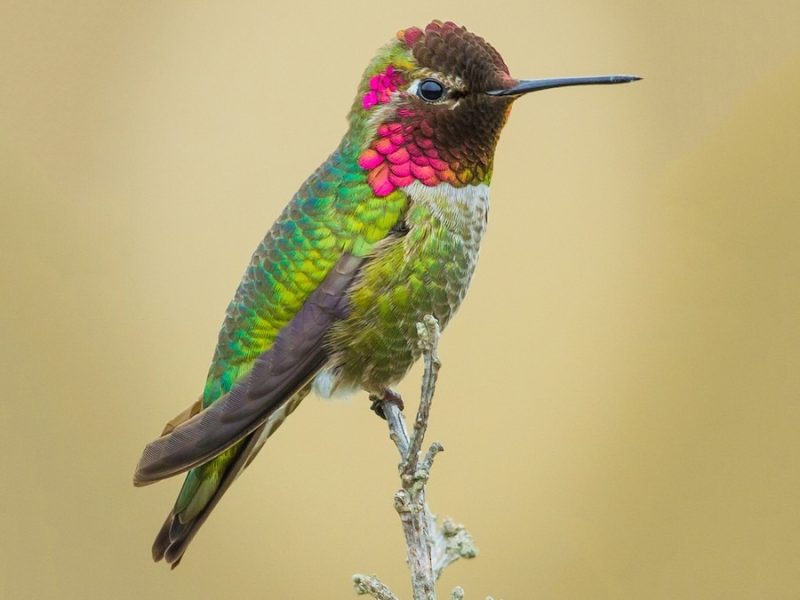
Anna’s Hummingbird is primarily a resident of the West Coast but has been occasionally reported in Idaho as a rare visitor or during migration. Males are striking with an iridescent emerald green back and a brilliant rose-pink crown and throat that shimmer vividly in sunlight. Females are more subdued with green upperparts and pale underparts without the bright throat patch.
This species ranges from 3.9 to 4.3 inches (10 to 11 cm) in length, making it slightly larger than many other hummingbirds found in Idaho. Anna’s Hummingbirds have relatively long, straight bills and are known for their bold and curious behavior around humans. They adapt well to urban and suburban environments where feeders and flowering plants are available.
Behaviorally, Anna’s Hummingbirds are non-migratory or partial migrants along their core range but may wander into Idaho occasionally. They are known for their aggressive territoriality and ability to dominate feeders. Their feeding habits include a broad variety of nectar sources and small insects, supporting their energetic flight and breeding activities.
In Idaho, sightings of Anna’s Hummingbird are rare and mostly anecdotal, often in late fall or early spring. When present, they prefer gardens, parks, and areas with abundant flowers and feeders. Their presence is considered a treat for Idaho birdwatchers and is often associated with expanding ranges possibly due to climate changes.
Broad-tailed Hummingbird (Selasphorus platycercus)
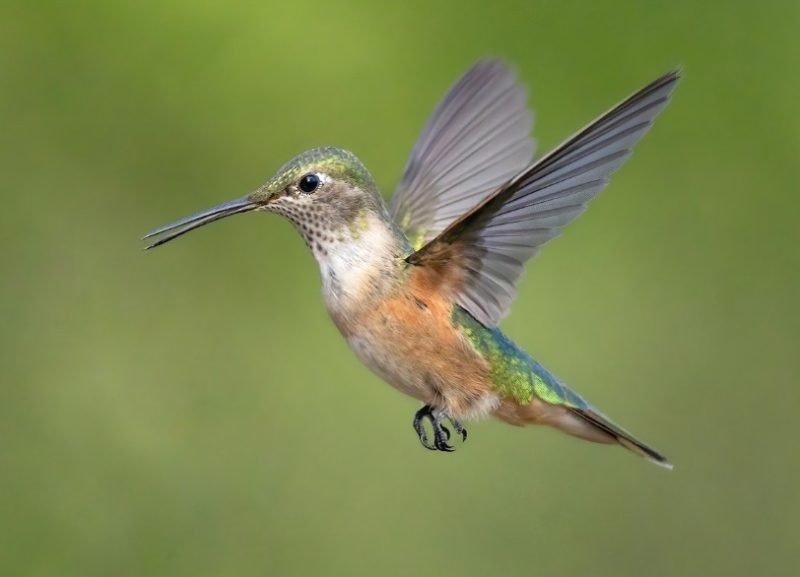
The Broad-tailed Hummingbird is another species occasionally found in Idaho, especially in mountainous regions during the breeding season. Males have a brilliant rose-red throat patch surrounded by a green back and white underparts, while females are duller with green backs and lightly streaked white breasts. This species is known for its loud, buzzy wing sounds during flight.
Measuring about 3 to 3.5 inches (7.5 to 9 cm) in length, Broad-tailed Hummingbirds have a robust build and relatively broad tail feathers, which contribute to their name. Their bill is slightly curved, adapted to feeding on a variety of mountain wildflowers. Their size and coloring can sometimes be confused with Rufous or Calliope Hummingbirds but are distinguishable by tail shape and vocalizations.
Behaviorally, Broad-tailed Hummingbirds are territorial during breeding season, performing aerial displays and chasing intruders from their feeding territories. They feed primarily on nectar but also catch small insects. Their migration takes them from wintering grounds in Mexico to mountainous breeding areas in the western U.S., including parts of Idaho.
In Idaho, Broad-tailed Hummingbirds are typically found in subalpine meadows, open forests, and mountain foothills. They prefer habitats rich in flowering plants during the summer months and are less commonly seen at lower elevations. Their melodic wing sounds and brilliant throat patches make them a favorite among birdwatchers exploring Idaho’s mountain landscapes.
Costa’s Hummingbird (Calypte costae)
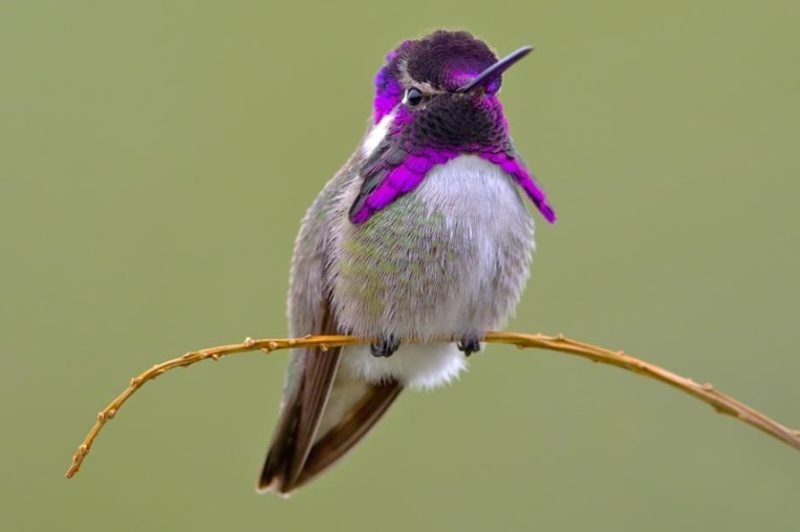
Costa’s Hummingbird is a striking species primarily found in the desert regions of the southwestern United States and Mexico. It is rarely seen in Idaho, usually only as a vagrant during migration. Males are notable for their vivid emerald-green back and crown, contrasted by an impressive purple throat patch that flares out like “ear tufts.” Females are more subdued with grayish-green upperparts and white underparts, lacking the dramatic throat coloration.
Measuring about 3 to 3.5 inches (7.5 to 9 cm) in length, Costa’s Hummingbird has a slender body and relatively long bill that is slightly curved downward. Its unique coloration and the distinct purple “ear patches” help differentiate it from other hummingbird species. Despite its rarity in Idaho, spotting a Costa’s is a special treat for avid birders.
Behaviorally, Costa’s Hummingbirds are adapted to arid environments, feeding on nectar from desert flowers and supplementing their diet with small insects. They are highly territorial and perform aerial displays during breeding season to attract mates and defend territories. Although they primarily inhabit desert scrub habitats, their occasional appearances in Idaho are usually linked to unusual migratory patterns or environmental changes.
In Idaho, Costa’s Hummingbird sightings are extremely rare and mostly documented in the southern parts of the state during fall migration. Due to their desert specialization, they do not establish breeding populations in Idaho. However, their occasional presence adds diversity to the hummingbird community and is exciting for birdwatchers hoping to catch a rare glimpse.
Allen’s Hummingbird (Selasphorus sasin)
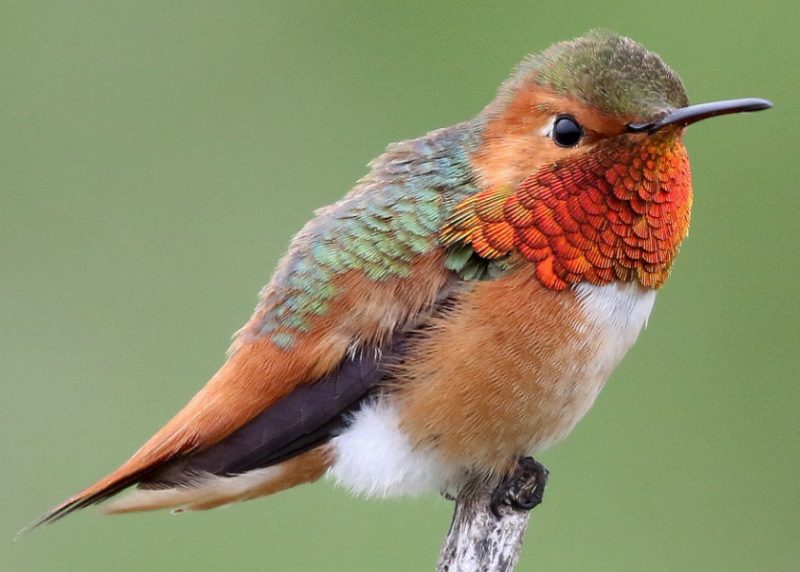
Allen’s Hummingbird is closely related to the Rufous Hummingbird and is primarily found along the Pacific Coast. Its presence in Idaho is uncommon and typically limited to rare vagrant sightings. Males exhibit bright orange on the back and flanks with a vivid reddish-orange throat, while females have a green back and white underparts with faint orange spotting.
This species measures about 3 to 3.5 inches (7.5 to 9 cm) long, similar in size to the Rufous. Allen’s Hummingbirds have a slightly more slender build and a relatively straight bill, ideal for feeding on nectar from a wide range of flowering plants. The coloration patterns and vocalizations distinguish them from their Rufous cousins, although the two can sometimes be confused.
Behaviorally, Allen’s Hummingbirds are territorial and aggressive during breeding season, defending nectar-rich feeding spots vigorously. They feed primarily on nectar and small insects, maintaining high energy for their fast, agile flight. Migration patterns mostly keep them along coastal areas, making Idaho appearances very infrequent.
In Idaho, Allen’s Hummingbirds are rare and usually spotted during spring or fall migration. They tend to appear in the southwestern parts of the state where suitable habitats exist temporarily. These rare sightings are prized by local birdwatchers eager to expand their hummingbird species lists.
Broad-billed Hummingbird (Cynanthus latirostris)
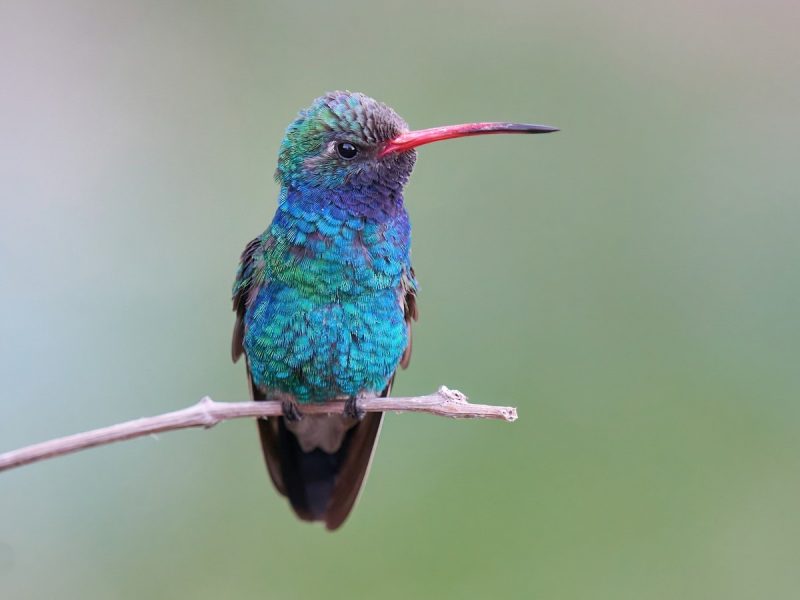
The Broad-billed Hummingbird is a vibrant species mostly native to the southwestern United States and Mexico. It is an exceptionally rare visitor to Idaho, with only a few recorded sightings. Males display bright turquoise-blue throats and broad red bills, complemented by green backs and white underparts. Females are less colorful, with duller green and gray plumage.
Adult Broad-billed Hummingbirds measure approximately 3.1 to 3.5 inches (8 to 9 cm) in length, featuring a distinctive broad bill that aids in feeding from various flowers. Their bright colors and unique bill shape make them stand out among hummingbirds. Due to their southern range, sightings in Idaho are considered vagrant occurrences.
Behaviorally, Broad-billed Hummingbirds are known for their boldness and adaptability in desert environments. They feed on nectar and small insects, defending feeding territories aggressively during breeding season. Their migration typically spans from Mexico into southern Arizona and New Mexico, rarely extending northward.
In Idaho, Broad-billed Hummingbird sightings are almost nonexistent, primarily documented as extraordinary vagrant records in the warmer southern regions during migration. Bird enthusiasts cherish these rare observations as exciting additions to the state’s hummingbird diversity.
Violet-crowned Hummingbird (Amazilia violiceps)

The Violet-crowned Hummingbird is a striking and elegant species that is primarily native to the desert regions and foothills of the southwestern United States and Mexico. It is considered a rare visitor in Idaho, mostly showing up as an unusual vagrant during migration or in years with atypical weather patterns. This hummingbird is easily recognizable by its distinctive and beautiful plumage: it features a bright emerald green back and wings, a clean white belly and underparts, and most notably, a vivid violet-colored crown that shines brilliantly in the sunlight.
Males and females of the species look quite similar, with only subtle differences. The male typically displays a slightly brighter and more extensive violet crown and a faint iridescent patch on the throat, while the female’s throat tends to be more muted or lightly streaked. Both sexes share a slender, medium-sized body averaging about 3.5 inches (9 cm) in length, with a relatively straight bill perfectly adapted to feed from tubular flowers. Their wings are agile and enable them to hover skillfully while feeding or during courtship displays.
Behaviorally, Violet-crowned Hummingbirds are known for their territorial nature during breeding seasons, vigorously defending rich nectar sources from competitors. They feed primarily on nectar from a variety of desert-adapted flowers such as ocotillo, desert honeysuckle, and other tubular blooms. Additionally, they consume small insects and spiders to supplement their protein needs. Their flight is characterized by rapid wing beats and quick darting movements, making them both graceful and efficient feeders.
In Idaho, the Violet-crowned Hummingbird is an extremely rare visitor, mostly confined to the southernmost regions or appearing during unusual migration events when environmental conditions push them beyond their typical range. Because of their rarity, sightings are highly prized by birdwatchers and ornithologists alike. When present, they favor riparian areas, desert scrub habitats, and gardens with abundant nectar sources. Their presence in Idaho highlights the dynamic and sometimes unpredictable nature of bird migration patterns.
FAQs About Hummingbirds in Idaho
What types of hummingbirds can be found in Idaho?
The most common hummingbirds in Idaho are Rufous, Calliope, and Black-chinned Hummingbirds. Several rare species may appear occasionally.
When is the best time to see hummingbirds in Idaho?
Hummingbirds are usually seen from late spring through early fall during their breeding and migration seasons.
What habitats do Idaho hummingbirds prefer?
They thrive in open woodlands, mountain meadows, riparian zones, and gardens with abundant flowering plants and feeders.
How can I attract hummingbirds to my garden in Idaho?
Plant native flowering plants rich in nectar and provide hummingbird feeders with fresh sugar water to attract them.
Do hummingbirds migrate through Idaho?
Yes, many species, especially Rufous and Calliope, migrate through Idaho to and from their breeding and wintering grounds.
Are there any rare hummingbirds in Idaho?
Yes, species like Anna’s, Costa’s, Allen’s, Broad-billed, and Violet-crowned Hummingbirds are rare vagrants occasionally seen.
What do hummingbirds eat besides nectar?
They also consume small insects and spiders to get protein necessary for energy and breeding.
How large are hummingbirds found in Idaho?
Most Idaho hummingbirds range from about 2.75 to 4.3 inches (7 to 11 cm) in length, depending on the species.


